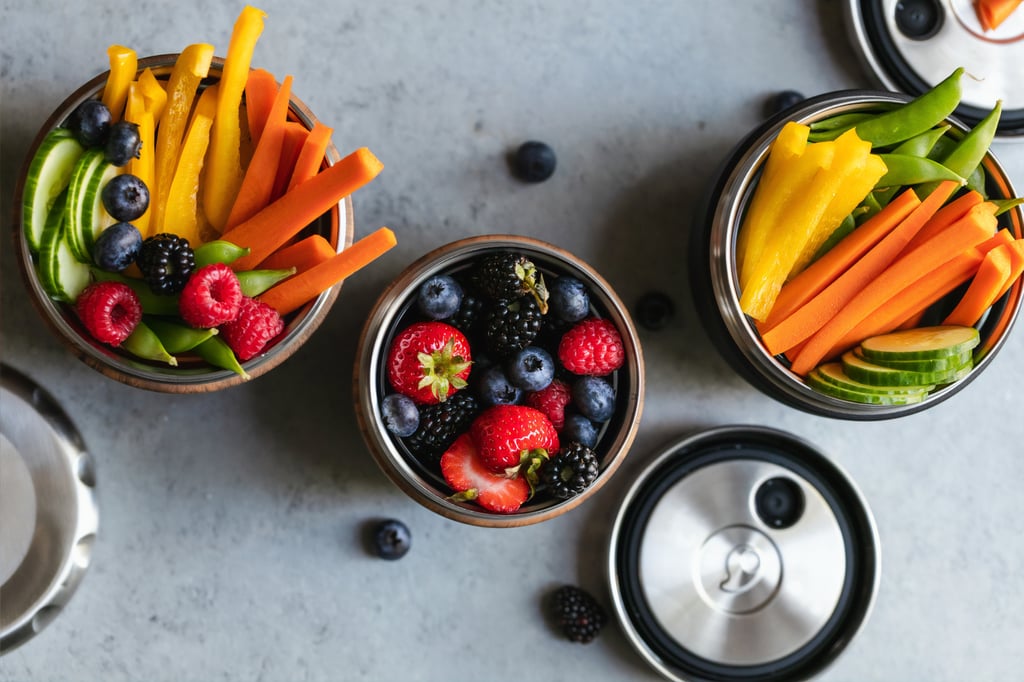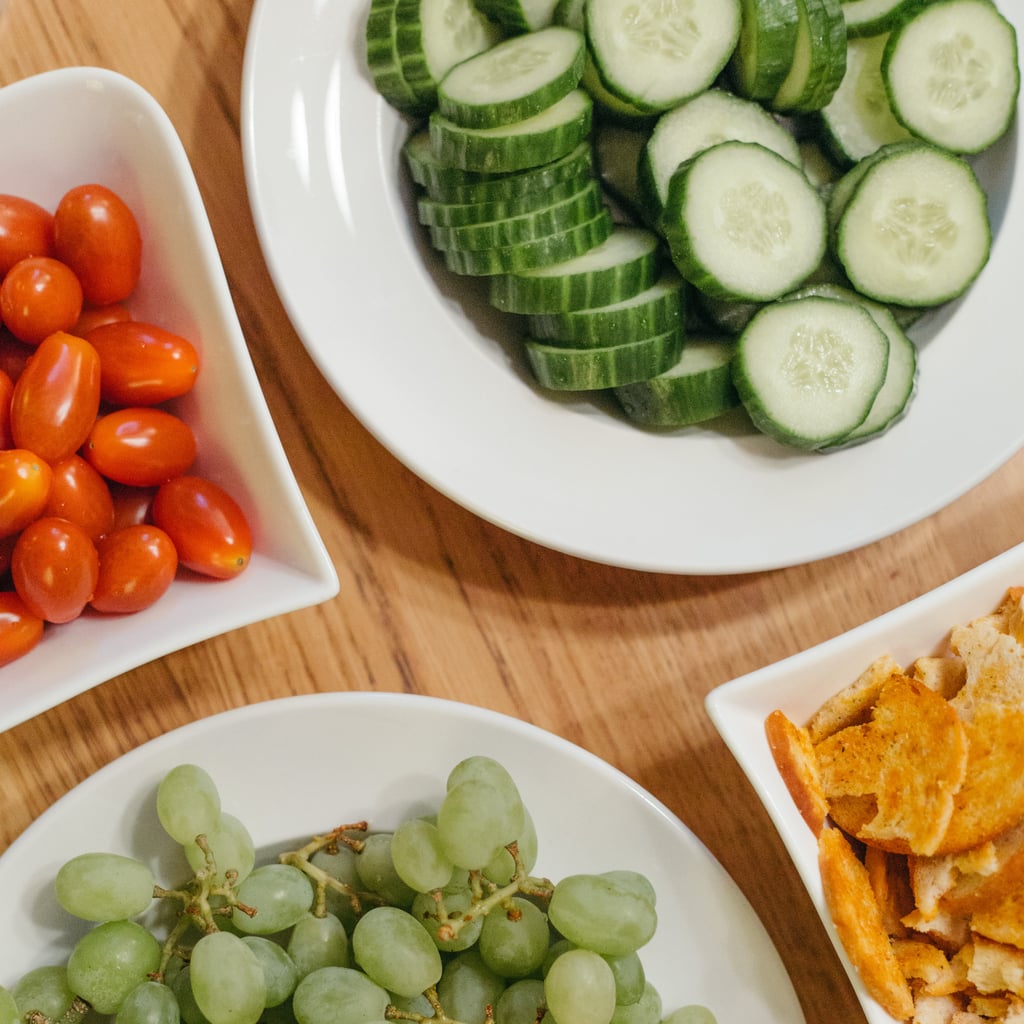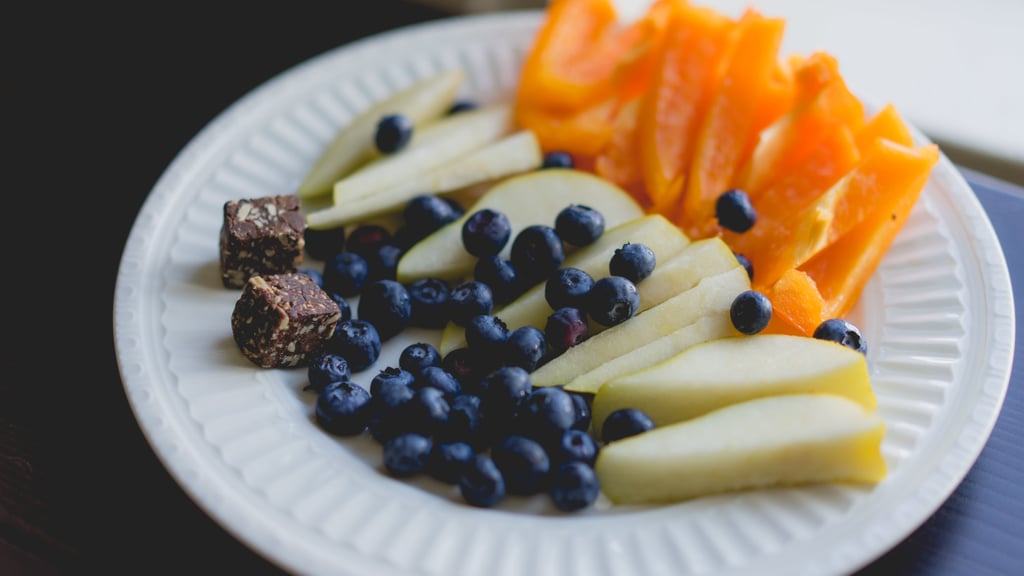For years, I've tried nearly everything to conquer mealtime struggles with my young kids, yet I somehow never stopped to think about a mindless daily ritual that was derailing any positive gains I tried to make at the dinner table. Unbeknownst to me, no matter how I meal prepped and grocery shopped, any hope I had in getting my kids to eat their grilled chicken and green beans at dinner was dashed by the seemingly simple afternoon snack.
I wasn't the only parent in the dark.
"Most people go along with children's food preferences more at snacks than they do at meals," wrote nutritionist Ellyn Satter, author of How to Get Your Kid to Eat [1].
I somehow never stopped to think about a mindless daily ritual that was derailing any positive gains I tried to make at the dinner table.
And although she agreed that it's OK to be more relaxed with quicker snacks than meals you spend time preparing, she made an eye-opening declaration: take snacks just as seriously as you do meals.
Because most children can't last from one meal to the next, snacks are an important part of the day's food supply, yet here I was, tossing some animal crackers in the general direction of my fussy toddler while I tried to cook a healthy-yet-appealing-to-a-picky-3-year-old meal before someone — myself included — broke down in tears.
"A snack is not a food handout," Satter affirmed. "A snack has a planned time and place, and like a meal, represents food that you more-or-less control."
After reading her book, I set three snack-related rules for my kids (and, let's be honest, myself), and after a few weeks, we've seen results.
Rule #1: They Can Only Eat Designated Snack Foods
For as long as my kids could ask for a snack or whine "I'm hungry," I'd unknowingly trade my control of their nutrition for their personal preferences. "OK, what do you want to eat?" I'd reply. Or I'd make a suggestion, they'd say no, and I'd keep going down the list until they settled on something they liked. And now that they're a bit older, they've had free rein over the pantry and refrigerator: whatever they could reach, they could eat.
To take back control, my gut instinct was to throw out the Goldfish crackers and pretzels, the sugary raisins, and the bulk supply of cheese cubes in order to become a strict supplier of celery sticks and orange slices, but Satter warned that it's more nuanced than that.
"A snack that is filling and also that will keep your child satisfied should include some starch, some protein, and some fat," she said. "If your child is really hungry or if he has to wait quite a while until the next meal, an apple or some carrots just won't do the trick."
That proved true with my kiddos. Whenever I'd pride myself on giving them a healthful snack of, say, mixed berries, they'd be back at my heels not 15 minutes later asking for something else to eat.
Whenever I'd pride myself on giving them a healthful snack, they'd be back at my heels not 15 minutes later asking for something else to eat.
So I've begun pairing fresh, raw vegetables with peanut butter, hummus, or cheese. I'll offer their beloved dried fruit snacks – like apricots, figs, and raisins – with nuts and sunflower seeds, or I'll toss some combination of all of those things into a bowl of cereal. I'll give them fresh fruit with a side of yoghurt. I'll do turkey roll-ups or a half-sandwich.
It has taken a bit more work on my part.
Where I once just scooped a dollop of applesauce into a bowl, I was now thinking about two- or three-part snack combinations. The harder adjustment, however, was having to flip the script on who gets to choose the snack foods.
I first tried a firm, "this is what we're having, no exceptions" approach, but I've since settled on a multiple-choice method in which I give my kids two or three choices to pick from.
Sometimes, those choices are as thrilling as cucumber slices with string cheese or cucumber slices with Triscuits. Sometimes, they pout. Sometimes, they won't eat the half of the snack I preferred. Sometimes I am too busy or tired and fling a slice of salami on the table and vow to do better next time.
Rule #2: They Can Only Eat During Designated Snack Times
Up until now, I never offered a snack until one of my kids asked for it. I'd wait for their hunger cues to guide me, which often meant they'd only chirp up once they were bored with playing and when dinner was just 15 minutes from being ready.
"Snacks should be spaced far enough before meals to allow your child to be hungry at the meal," Satter advised in her book. "You want your child to come to the table hungry, so he is interested in eating and so his appetite encourages him to be more adventurous in trying new foods. You don't want him to come to the table starved, so he is either too cranky to eat or so famished that he simply wolfs down his food."
This, of course, is easier said than done. I've got two kids with two different nap schedules and appetites, and "dinner time" is an ever-moving target thanks to rush hour traffic and recipes that aren't as simple as the blog may have alleged.
I can no longer use food as a replacement for proper parenting – I can't just offer a distracting treat in response to sadness, pain, or boredom.
Now, though, I give my kids a sizable snack as soon as they are home from school or up from their nap. If it looks like the wait time for dinner will be particularly long, I'll do my best to offer two well-spaced snacks, and I'll often offer an after-dinner or pre-bedtime snack depending on if they ate their dinner (because if they didn't, and they're hungry later, their snack is right there on their untouched dinner plate!).
I try to announce, "It's almost snack time," before giving them each their options and presenting their food. If they say they're not hungry, the snack is put away. It's not an open buffet they can graze from. This has certainly created some ravenous tantrums when they come begging for scraps just seven minutes after they brushed off their snack time, but it's slowly teaching them food isn't on-demand anymore.
Moreover, it's also teaching me I can no longer use food as a replacement for proper parenting – that I can't just offer a distracting treat in response to sadness, pain, or boredom. As Satter said, "If you give a child a cookie, or even carrots, to amuse or divert or calm him, he will soon learn that strong feelings are not to be tolerated or dealt with, and that eating can be used as a panacea."
Rule #3: They Can Only Eat at Designated Snack Places
I used to let my kids grab a snack and carry on with whatever they were doing, whether it was working on a floor puzzle or colouring or playing tag up and down the hall.
Not only did this leave my house littered with crumbs and sticky remnants of stepped-on cheese bits, but according to Satter, it is just the sort of behaviour that can lead kids to mindlessly eat. "This kind of eating tends to be less nutritious and leads to misuse of food," she wrote.
Now, whenever they eat a snack, it's at the dinner table or seated on a stool at the kitchen counter. Turns out, an after-dinner fruit popsicle is much less exciting when they can't simultaneously build Legos for the 20 minutes it normally takes them to polish one off. I've found that they consume more thoughtfully – they're more aware when they are satiated and not just eating to eat.
What This Snack Schedule Has Taught Me
After having attempted to follow these three rules for several weeks now, I've seen some positive changes in the way my kids eat. At the outset, it felt like a form of parental torture in which every "snack time" was met with ferocious opposition. They hated the choices I gave, they refused to sit down, they lunged for the box of tortilla chips in the pantry when my back was turned. It seemed like a doomed experiment, and I gave in plenty of times just to keep from losing my cool. (OK, I lost my cool a lot.)
Eventually, though, my kids started to get used to the new normal of being called into the kitchen for a snack. It's still not perfect, and I expect it won't ever be, knowing my and my partner's parenting styles. We'll try to stick to the plan as consistently as we can, but we know some days will be more effective than others.
The biggest lesson in all this, for me, was that snacks need to be treated with the same general process as meals.
"Your child shouldn't be allowed to run with food or get food handouts whenever he wants them," Satter wrote. "Your child should have a snack, and be done with it."




